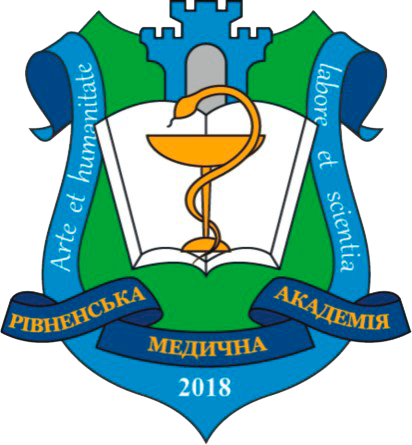STUDY OF THE RANGE OF ANTIHISTAMINES IN THE PHARMACEUTICAL MARKET OF UKRAINE
DOI:
https://doi.org/10.32782/health-2024.3.15Keywords:
allergic diseases, antihistamines, pharmaceutical market, assortment, active pharmaceutical ingredientAbstract
The article presents the results of marketing research of the assortment portfolio of antihistamines in the pharmaceutical market of Ukraine, taking into account the Anatomical Therapeutic Chemical (ATC) classification system, dosage forms, manufacturing countries and manufacturing enterprises. The research was conducted using official sources of information, the data from which were studied, structured and systematized using statistical, logical and graphical methods. As a result of the analysis, it was found that as of July 2024, the pharmaceutical market of Ukraine in group R06 “Antihistamines for systemic use” includes 196 trade names of medicinal products. Of these, the share of medicines belonging to the first generation is 26.5 %; to the second – 26.0 %; to the third – 47.5 % of the total number of names. Among the fairly large range of antihistamines on the pharmaceutical market, the leading position is currently held by drugs based on the active pharmaceutical ingredient desloratadine (23.5 % of the total number of antihistamines on the market). Segmentation of the market of the studied group of drugs by country of origin revealed that the pharmaceutical market of Ukraine is mostly represented by foreign-made drugs (59.2 %). India has been holding the leading position among importing countries for many years (29 trade names). In Ukraine, 20 domestic manufacturing companies produce antihistamines. Among them, the largest number of antihistamines is produced by Pharmaceutical Company Zdorovye LLC (21.25 %) and Farmak JSC (13.75 %). The analysis of the assortment by dosage form showed that the share of antihistamines in solid dosage forms is 66.8 %, with the largest number of drugs produced in the form of coated tablets.
References
Mazur M., Czarnobilska M., Dyga W., Czarnobilska E. Trends in the Epidemiology of Allergic Diseases of the Airways in Children Growing Up in an Urban Agglomeration. Journal of clinical medicine. 2022. № 11(8). P. 2188. https://doi.org/10.3390/jcm11082188
Gutowska-Ślesik J., Samoliński B., Krzych-Fałta E. The increase in allergic conditions based on a review of literature. Postepy dermatologii i alergologii. 2023. № 40(1). P. 1–7. https://doi.org/10.5114/ada.2022.119009
Kawauchi H., Yanai K., Wang D. Y., Itahashi K., Okubo K. Antihistamines for Allergic Rhinitis Treatment from the Viewpoint of Nonsedative Properties. International journal of molecular sciences. 2019. № 20(1). P. 213. https://doi.org/10.3390/ijms20010213
Yanai K., Yoshikawa T., Yanai A., Nakamura T., Iida T., Leurs R., Tashiro M. The clinical pharmacology of non-sedating antihistamines. Pharmacology & therapeutics. 2017. № 178. P. 148–156. https://doi.org/10.1016/j.pharmthera.2017.04.004
Panula P., Chazot P. L., Cowart M., Gutzmer R., Leurs R., Liu W., Stark H., Thurmond R. L., Haas H. L. International Union of Basic and Clinical Pharmacology. XCVIII. Histamine Receptors. Pharmacological reviews. 2015. № 67(3). P. 601–655. https://doi.org/10.1124/pr.114.010249
Simons, F. E., Simons, K. J. Histamine and H1-antihistamines: celebrating a century of progress. The Journal of allergy and clinical immunology. 2011. № 128(6). P. 1139–1150.e4. https://doi.org/10.1016/j.jaci.2011.09.005
Fein M. N., Fischer D. A., O'Keefe A. W., Sussman G. L. CSACI position statement: Newer generation H1-antihistamines are safer than first-generation H1-antihistamines and should be the first-line antihistamines for the treatment of allergic rhinitis and urticaria. Allergy, asthma, and clinical immunology : official journal of the Canadian Society of Allergy and Clinical Immunology. 2019. № 15. P. 61. https://doi.org/10.1186/s13223-019-0375-9
Hu Y., Sieck D. E., Hsu W. H. Why are second-generation H1-antihistamines minimally sedating?. European journal of pharmacology. 2015. № 765. P. 100–106. https://doi.org/10.1016/j.ejphar.2015.08.016
Nicolas J. M. The metabolic profile of second-generation antihistamines. Allergy. 2000. № 55 Suppl 60. P. 46–52. https://doi.org/10.1034/j.1398-9995.2000.00008.x
Olasińska-Wiśniewska A., Olasiński J., Grajek S. Cardiovascular safety of antihistamines. Postepy dermatologii i alergologii. 2014. № 31(3). P. 182–186. https://doi.org/10.5114/pdia.2014.43191
Wang J., Zhou Y., Zhang H., Hu L., Liu J., Wang L., Wang T., Zhang H., Cong L., Wang Q. Pathogenesis of allergic diseases and implications for therapeutic interventions. Signal transduction and targeted therapy. 2023. № 8(1). P. 138. https://doi.org/10.1038/s41392-023-01344-4
Державний реєстр лікарських засобів. URL: http://www.drlz.com.ua (Дата звернення: 05.07.2024 р.)
Спеціалізоване медичне інтернет-видання для лікарів, провізорів, фармацевтів, студентів медичних і фармацевтичних вузів «Компендіум». URL: https://compendium.com.ua (Дата звернення: 02.07.2024 р.)
Iakovlieva L., Berdnik O. G., Gurtyakova A. A. Analysis of assortment and volumes of consumption of antihistamin preparations in Ukraine. Farmatsevtychnyi Zhurnal. 2018. № (1-2). P. 12-21. https://doi.org/10.32352/0367-3057.1-2.18.02
Balitska О. P., Zlahoda V. S., Haiday O. D., Blahun O. D., Artemchuk M. A. The analysis of the range of antihistamines at the pharmaceutical market of Ukraine. Social Pharmacy in Health Care. 2023. № 9(2). P. 74-79. https://doi.org/10.24959/sphhcj.23.293





